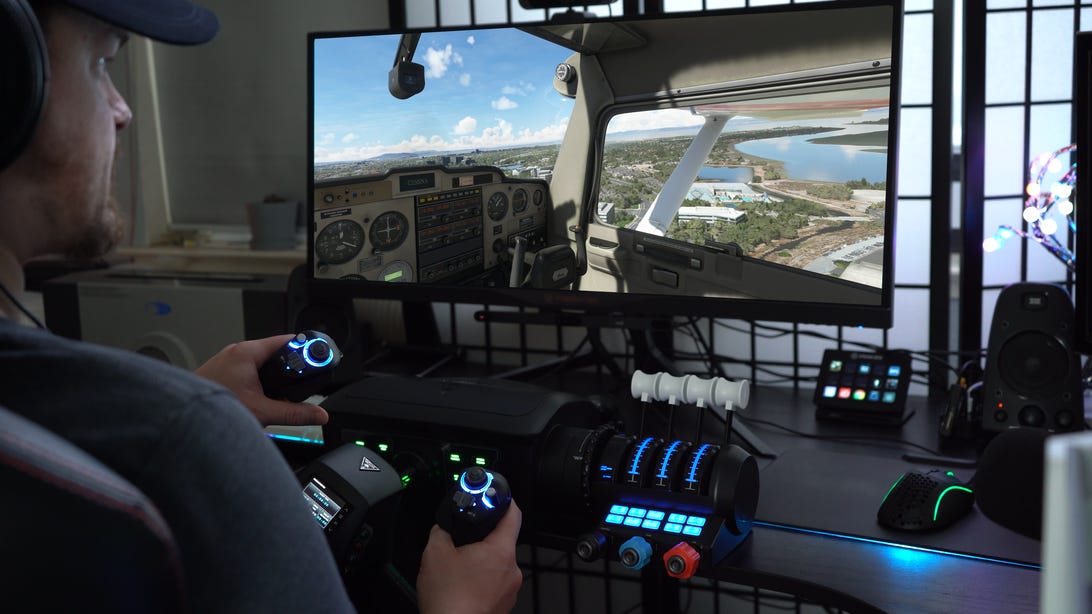
Chase Evans/CNET
Just when you thought your wallet was safe, Turtle Beach crashes into the flight simulation scene with VelocityOne Flight, an all-in-one USB Xbox- and PC-compatible yoke for fans of Microsoft Flight Simulator and the like. It comes with everything you need to start flying like a real pilot, with an immersive, lifelike yoke and throttle controls. At $380, the yoke may seem a bit pricey, especially to first-timers, but you get a ton of features packed inside. Despite a few gripes, this is an amazing first-gen system from Turtle Beach and I had heaps of fun in MSFS 2020 flying with it. Plus the VelocityOne Flight is the only all-in-one yoke available for both Xbox and PC, at least for now.
Like
- Great feel and responsiveness
- Nice mounting system
- Terrific training mode
- Full-color flight-management display
Don’t Like
- Disruptive detent in yoke
- Loose-ish throttles
Turtle Beach does a lot of things right. The company prides itself on delivering everything you might possibly need to get quickly set up and inside the cockpit with as little friction as possible. It includes an extremely useful quick start guide for flight sim newbies as well as for more advanced flyers who want to create custom status indicator panels. And thank heavens for that, because there are a ton of fully programmable controls.
The yoke also comes with a throttle quadrant with vernier-style (dual scale) controls for single-engine prop planes, a very nice trim wheel and 10 programmable buttons. It needs zero configuration out of the box and comes with three onboard flight presets.
I really like Turtle Beach’s mount design, which allows for easy installation and removal of the flight yoke – perfect for those who still need to use their desk for work, too. The mounting system is hidden inside a compartment on the top of the yoke housing. Just lift the panel to reveal two bolts and use the included hex tool to tighten them once it’s attached to any desk thinner than 2.5 inches (64mm). Be sure not to overtighten, the rubber padding on the clamps will hold it in place just fine. Two adhesive pads are included to attach to the surface of the desk if the mounting brackets won’t suffice, but this is a permanent solution and certainly not something I would recommend for most people.
And I can’t praise Turtle Beach enough for including the fold-out poster that is both a quick-start guide and has instructions on every single action the yoke can perform on the aircraft. Even if you’re a committed avoider of instructions, it’s worth keeping by your side.
You can download the software from the Windows Store for firmware updates to enable more fancy features down the road. Search for “Turtle Beach Control Center.”
A smooth operator, for the most part
The yoke offers 180 degrees of left and right rotation, with springs that deliver smooth resistance throughout the turn. But there’s a center detent — that noticeable soft click you feel which tells you a control, such as a dial, has reached its home position — and it gets in the way of small, precise movements. Here it indicates the flight yoke has rotated back to center, and you really notice it when turning the yoke completely to one side and releasing it. It’s by no means a deal-breaker but it might make some enthusiasts unhappy.
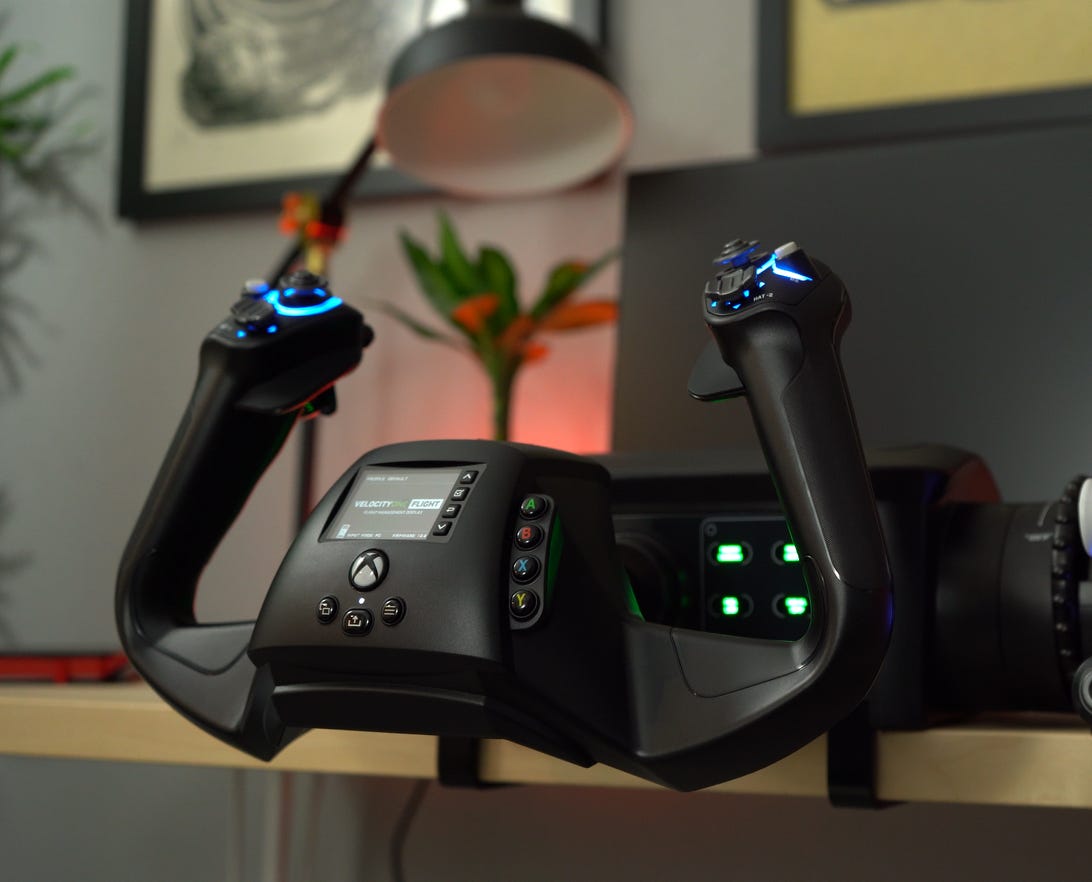
Chase Evans/CNET
The aluminum shaft of the yoke controls the pitch (lateral rotation) of the aircraft. You can push or pull the yoke about 2.5 inches (64mm) in either direction along the shaft, which generally feels smooth, though you may notice a bit of jerkiness out of the box — I certainly did. Turtle Beach says the jerkiness should smooth out after about 20 hours of use.
Two POV hat D-pads provide eight views to look around you and two buttons on each side of the hat either reset your view or toggle a third-person view. There are also two four-way hat switches that default to controlling the aileron and rudder trim. The yoke handles have two triggers to control the rudders that feel similar to those of an Xbox controller, and above them are controller-like bumpers to independently control the brakes on the left and right side of the aircraft.
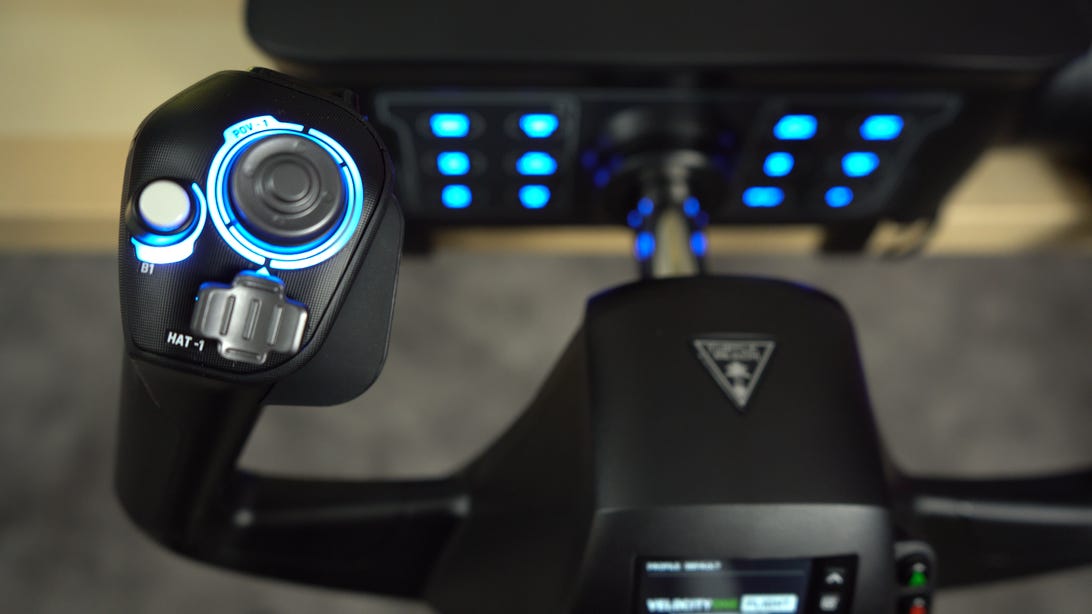
Chase Evans/CNET
Front and center is the full-color flight management display which really helps this yoke stand out from the competition, although I think it’s terribly underutilized. It lets you quickly swap among flight profile presets (especially useful on Xbox) or use its built-in timer.
There’s also a brilliant training mode that will indicate which operation a control is bound to when it senses an input. This is especially useful for newer pilots who are just getting acclimated to the device and figuring out which button controls what – and that certainly helps jump one of the largest barriers to entry for folks new to flight sims.
Beyond those, the only real use for the FMD is the chronometer – nothing fancy, just a clock and a timer, but useful for more serious enthusiasts who want to time their turns, their approaches, fuel tank swaps, and so on. You know, players who want to treat this like an actual flight.
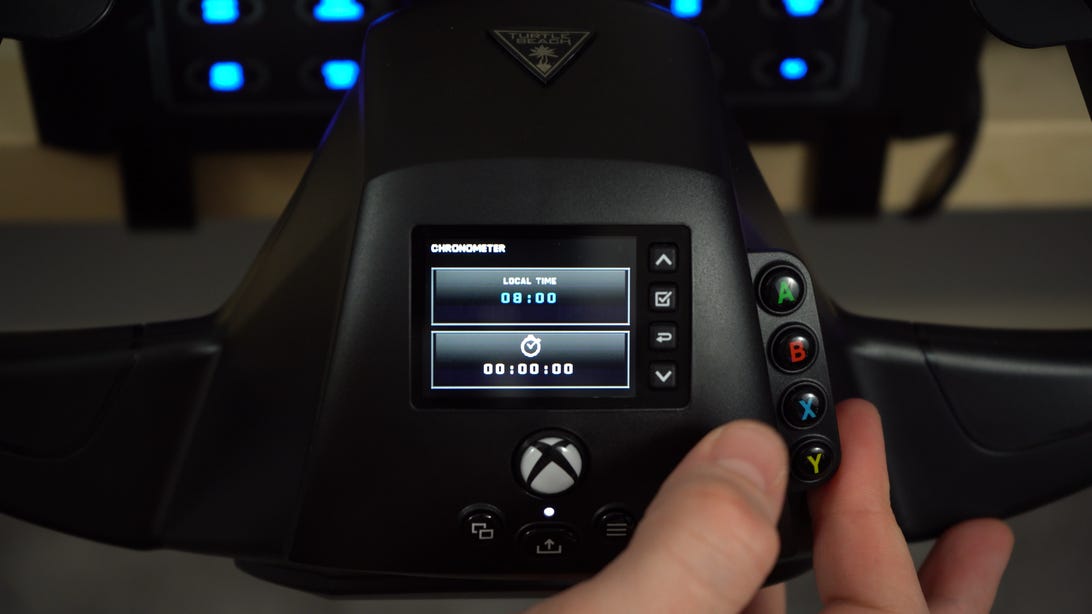
Chase Evans/CNET
A status indicator panel behind the yoke provides an assortment of real-time info. Everything from the parking brake to the flap status, as well as master caution and low fuel warnings populate the default SIP. Turtle Beach even includes extra panels with stickers so you can create your own. (A complete implementation for this will arrive in a firmware update, probably by the end of February.)
On the left side of the yoke housing is a 3.5mm combo audio jack that can work with any analog headset.
Throttle back
Last but not least, the throttle quadrant. Surprisingly, the best part of this quadrant is the vernier controls, which have a nice smooth glide and just the right amount of resistance when pushed and pulled. they are an absolute treat to have on a throttle quadrant and a welcome feature for a sim. I’m also a big fan of the integrated trim wheel, which has just the right amount of resistance and delivers extreme precision for adjusting pitch (the elevator axis).
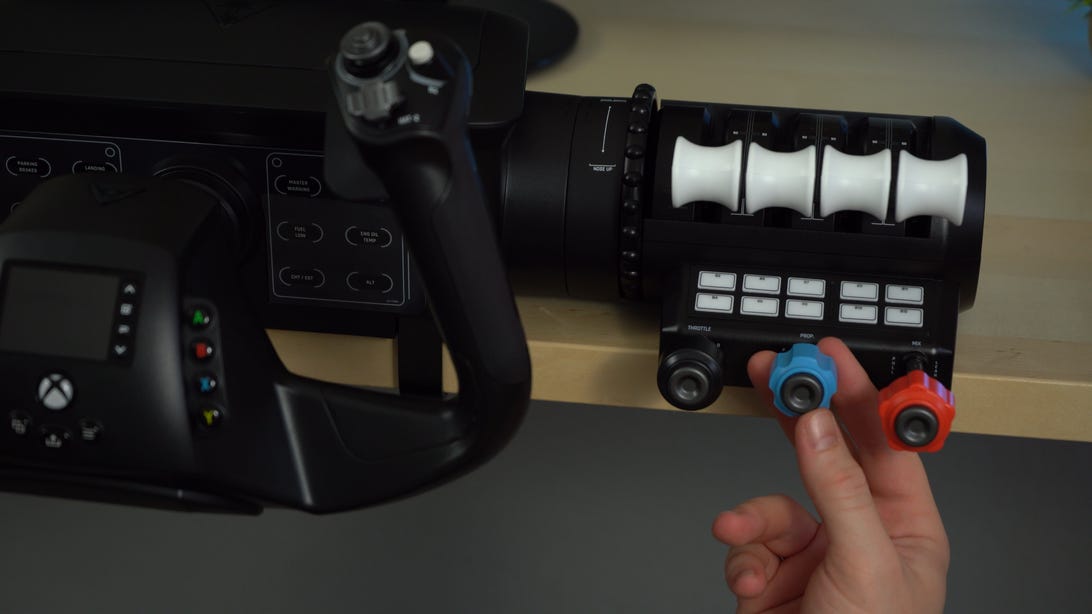
Chase Evans/CNET
On the other hand, the dual lever throttle controls have less resistance than I expected and move a little too easily. There’s also a massive detent at the bottom of the throttles, which prevents me from using the throttle for reverse thrust in jets. It just seems to be a neutral zone for the throttle. I hope Turtle Beach adds more capability via a future update.
You can bind the 10 buttons to control anything, plus they come with stickers that you can attach to the buttons so you always know what you’re getting yourself into before pressing one.
My only significant criticism of the VelocityOne Flight is there’s a little too much play where the yoke is mated to the shaft: I think more stabilization along the shaft would feel a lot better. The combination of that with the center detent results in what feels like a rather large dead zone in the middle, which can be exacerbated when flying one-handed.
But otherwise, this is a great entry-level yoke, especially for newer sim pilots — if they don’t choke on the price.








